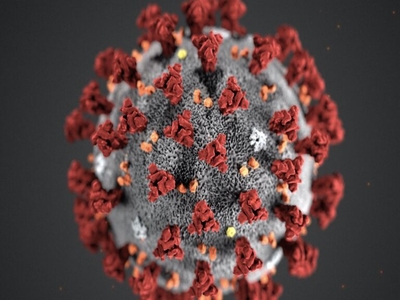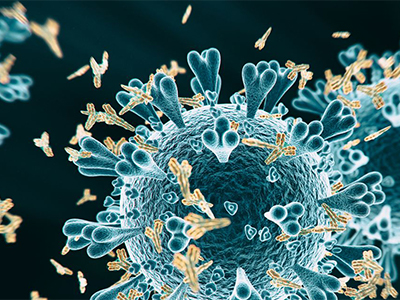As we’ve seen over these past few months, a SARS-CoV-2 infection can result in widely different manifestations and severities in the subsequent course of the disease it causes, COVID-19. Many of those infected by SARS-CoV-2 experience a mild to severe illness, with symptoms that include fever, shortness of breath, cough, and fatigue that appear roughly 2-14 days after exposure to the virus. On the other hand, some individuals infected with the virus will remain asymptomatic.
As states across the U.S. continue to re-open from novel coronavirus-mandated shut downs and as things may seem like they are returning “back to normal”, these asymptomatic patients remain a cause of concern that must be studied further in order to prevent future waves of infection. Currently, neither the clinical features nor the immune response of asymptomatic cases have been well described and profiled.
The World Health Organization (WHO) has recently been embroiled in controversy surrounding their claim at a June 8th press conference that asymptomatic transmission of SARS-CoV-2 appears to be “very rare”. The individual who made the statement, Dr. Maria Van Kerkhove, serves as the technical lead for the WHO’s COVID-19 response. She later clarified her statement at a briefing the next day, emphasizing that her comments were in response to a journalist’s questions and that it did not constitute or reflect official WHO policies. The truth is, and as Dr. Kerkove would agree, there is not yet a clear answer or profile of community COVID-19 spread and transmission dynamics. But progress is being made.
In a recent study published on June 3rd in the Annals of Internal Medicine by researchers at the Scripps Research Translational Institute, 16 different groups of COVID-19 patients from around the world were studied in order to get a better idea of how many cases of the novel coronavirus can be traced to asymptomatic individuals. Their conclusions were, from their sample groups, that a minimum of 30% of the cases were spread from those without knowing they were ever infected. In fact, the study further concludes that the number is likely closer to 40%.
 Scientists from the Scripps Research Translational Institute have made progress in quantifying the amount of asymptomatic patients.
Scientists from the Scripps Research Translational Institute have made progress in quantifying the amount of asymptomatic patients.
It would seem from the results of this Scripps study that Dr. Kerkhove was somewhat premature in her initial statement that asymptomatic transmission is “very rare”. By her own admission at a later press briefing, she estimates that between 6% and 41% of individuals may be asymptomatic. The sizable range in the WHO’s estimates indicates just how little is currently known about asymptomatic patients. The Scripps study certainly sheds a bit more light on the number of asymptomatic individuals, and that the actual number of asymptomatic patients may in reality be on the higher end of estimates. Another particularly important finding in the Scripps study was that “the viral load of such asymptomatic persons has been equal to that of symptomatic persons, suggesting similar potential for viral transmission”. Given their relatively large and global sample population, their findings further highlight the likely fact that asymptomatic patients may be just as likely to transmit the SARS-CoV-2 virus as symptomatic patients. Further studies are certainly needed, but this provides some food for thought, especially as states across the U.S. continue opening their sectors in an effort to recover from the economic impact of necessary shutdowns.
Another study published recently in Nature Medicine by scientists at the Chongqing Medical University in Chongqing, China regarding asymptomatic COVID-19 patients is particularly noteworthy. Their study, titled, “Clinical and immunological assessment of asymptomatic SARS-CoV-2 infections” took a closer look at the clinical and immunological analysis of 37 asymptomatic patient cases. Each patient was diagnosed with RT-PCR confirmed SARS-CoV-2 infections that did not have any relevant clinical symptoms during their hospitalization and for 14 days beforehand. Of these 37 patients, 22 were female and 15 were males, with their ages ranging from 8 to 75 years with a median age of 41 years.
The researchers found that these asymptomatic patients had a statistically significantly longer period of viral shedding (19 days) as compared to the symptomatic patients (14 days). In addition, the study found that the level of virus-specific IgG antibodies, which form in 7-10 days from the time of infection, were significantly lower in the asymptomatic group during the acute phase. Asymptomatic patients also had lower expression levels of 18 pro and anti-inflammatory cytokines, indicating that they likely had a weaker immune response to the infection as compared to symptomatic patients. All of these data suggest, from the researchers involved in this study, that there are potentially significant transmission risks (along with other ethical issues) in using “immunity passports” to dictate travel and re-openings during this pandemic. After all, COVID-19 immunity is itself still shrouded in mystery, with scientists being generally unsure whether everyone who recovers from infection can produce enough antibodies to guarantee future protection.
For further reading, be sure to check out our curated list of blogs and resources here that we've been able to compile over the course of a year under COVID-19.



